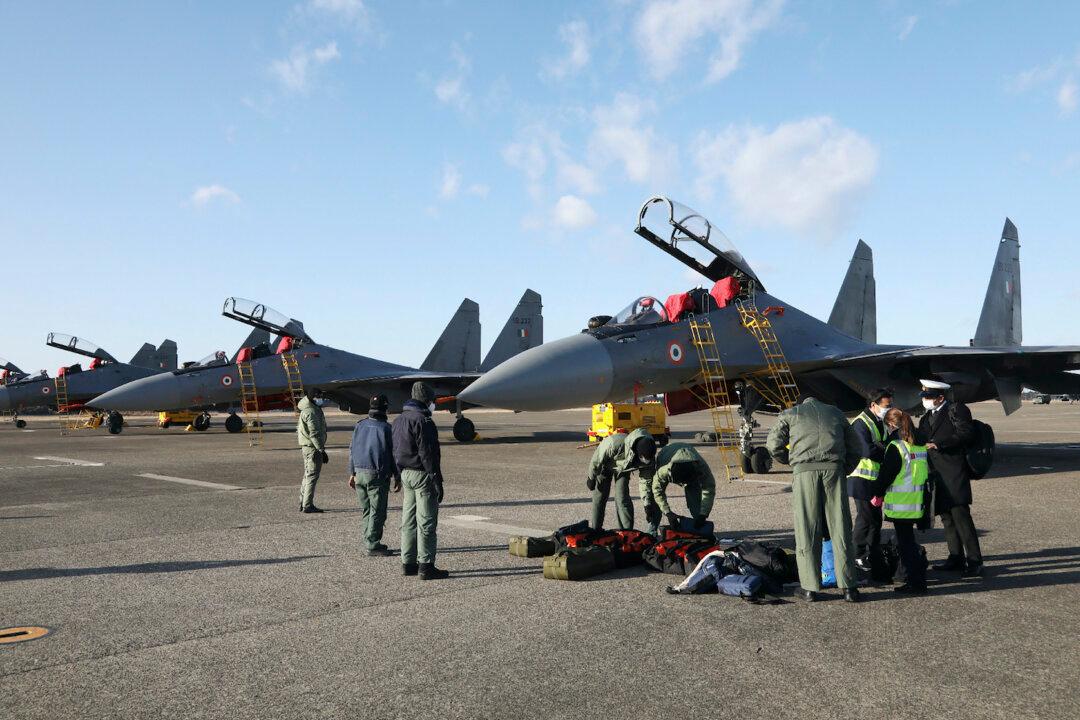Japan and India on Jan. 12 launched their first joint air combat drill in a move to bolster their military alliance amid the security challenges posed by the Chinese communist regime in the Indo-Pacific region.
Japan deployed four F-2 and four F-15 fighters to participate in the Veer Guardian 2023 joint drill, while India sent four Su-30 MKI fighters, two C-17 transport aircraft, and one IL-78 refueling tanker.





